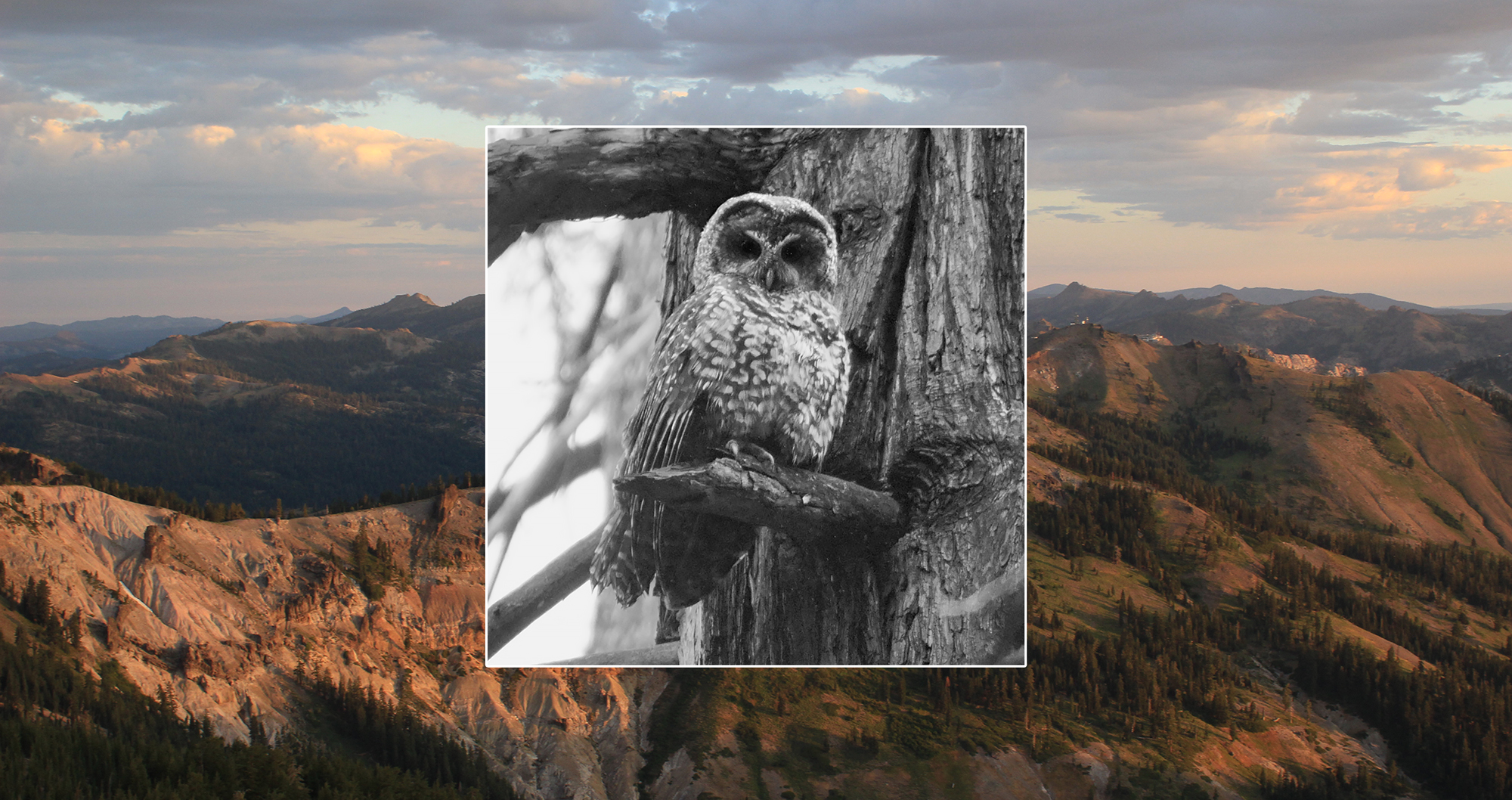Spotted Owls
Monitoring population trends and responses to habitat change and supporting management of an invasive competitor.

Backed by the comprehensive data generated by our Sierra Nevada acoustic monitoring program, this project initially focused on the rapid increase of the invasive Barred Owl population which threatened the native California Spotted Owl. The experimental removal of Barred Owls in Sierra Nevada was successful, leading to a swift recovery of the Spotted Owl population. In California’s coastal redwoods, the Barred Owl continues to threaten the Spotted Owl, and we are supporting real-time acoustic monitoring efforts employed to manage this invasion front
In Sierra Nevada, we’re now focused on understanding how the threat of long-term habitat loss driven by megafires can be counteracted by forest management that risks incurring short-term habitat degradation. Continual refinement of the acoustic monitoring program is central to this effort because accurately assessing where owls are and are not in relation to fire and forest management is essential to understanding – and managing – how the population is changing across time and space.

Kelly, KG, CM Wood, KA McGinn, HA Kramer, SC Sawyer, SA Whitmore, DS Reid, S Kahl, A Reiss, J Eiseman, W Berigan, JJ Keane, P Shaklee, L Gallagher, H Klinck, RJ Gutiérrez, and MZ Peery. 2023. Estimating population size for California spotted owls and barred owls across the Sierra Nevada with bioacoustics. Ecological Indicators 154: 110851.
Hofstadter, DF, NF Kryshak, CM Wood, BP Dotters, KN Roberts, KG Kelly, JJ Keane, SC Sawyer, PA Shaklee, HA Kramer, RJ Gutiérrez, and MZ Peery. 2022. Arresting the spread of invasive species in continental systems. Frontiers in Ecology and the Environment. doi: 10.1002/fee.2458
Wood, CM, VD Popescu, H Klinck, JJ Keane, RJ Gutiérrez, SC Sawyer, and MZ Peery. Detecting small changes in populations at landscape scales: A bioacoustic site-occupancy framework. Ecological Indicators 98: 492-507.
Researchers
Collaborators
Dr. Zach Peery (University of Wisconsin, Madison)
Sponsors
USDA Forest Service
NASA
CAL-FIRE
National Park Service